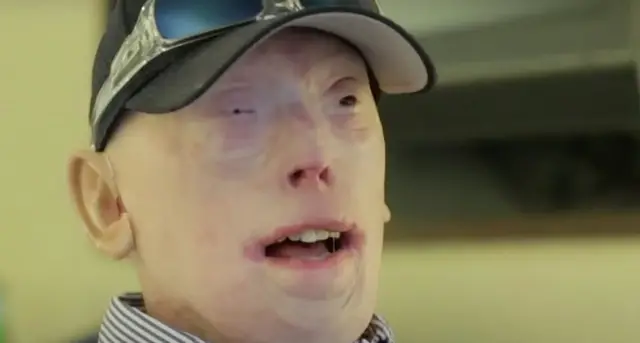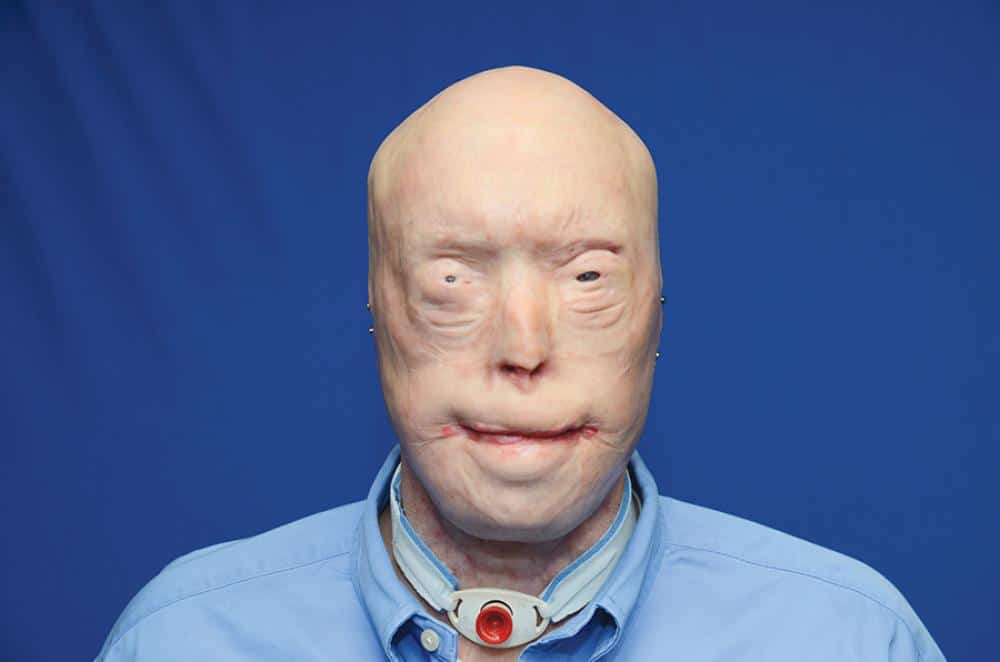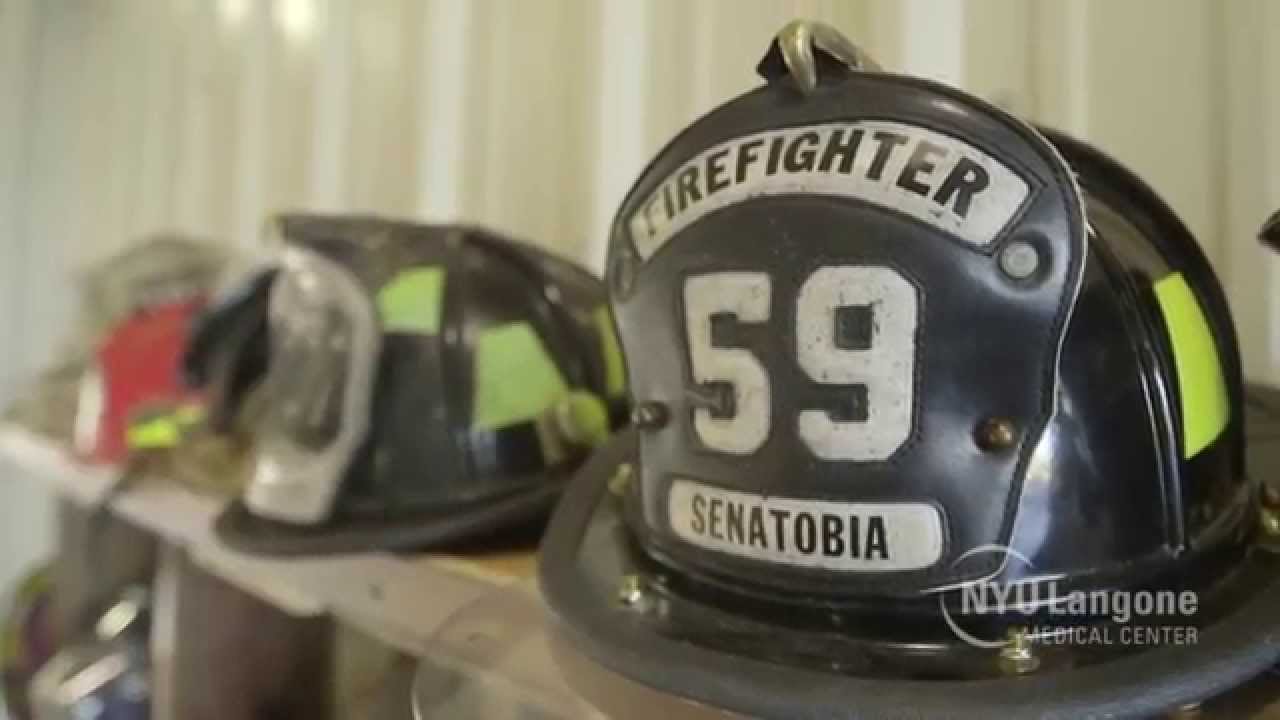In 2001, Patrick Hardison, a dedicated volunteer firefighter from Senatobia, Mississippi, responded to a house fire that would irrevocably change his life. While courageously attempting to rescue a woman trapped inside, the building’s roof collapsed, engulfing him in flames. The catastrophic incident left Patrick with third-degree burns, obliterating his facial features, including his ears, lips, most of his nose, and eyelids.

The aftermath was a harrowing journey through over 70 surgical procedures aimed at reconstructing his face and restoring basic functions. Despite these efforts, Patrick Hardison faced daily challenges: he couldn’t close his eyes, eat without excruciating pain, or bear the stares from strangers. To shield himself, he resorted to wearing sunglasses, a baseball cap, and prosthetic ears, yet the emotional and psychological toll was profound.

A glimmer of hope emerged in 2015 when Patrick Hardison met Dr. Eduardo D. Rodriguez at NYU Langone Medical Center. Dr. Rodriguez proposed a groundbreaking solution: a full face transplant. The search for a suitable donor was arduous, but fate intervened when 26-year-old David Rodebaugh, who had suffered a fatal cycling accident, became the donor. His mother, Nancy Millar, made the compassionate decision to donate her son’s face, offering Patrick a chance at a new life.

The 26-hour surgery, led by Dr. Rodriguez and a team of over 100 medical professionals, was unprecedented in its complexity. It involved transplanting not only the facial skin but also the scalp, ears, and eyelids, restoring Patrick’s ability to blink—a critical function that had been compromised, threatening his vision.
Patrick’s recovery has been nothing short of extraordinary. He regained the ability to perform a full range of facial expressions, chew without pain, and speak clearly. Most significantly, Patrick Hardison can fully close his eyes, eliminating the risk of blindness that once loomed over him. His transformation has allowed him to reintegrate into society without fear of stares or judgment, embracing activities he once cherished, like spending quality time with his children and engaging with his community.

Reflecting on his journey, Patrick Hardison expressed profound gratitude: “I prayed for change, and then this wonderful thing happened. When I look into the eyes of my kids, I see happiness—because they see how happy I am.” His story stands as a testament to resilience, the relentless pursuit of medical innovation, and the boundless compassion that can arise from tragedy.
For a visual insight into Patrick Hardison’s journey, you can watch the following video:

